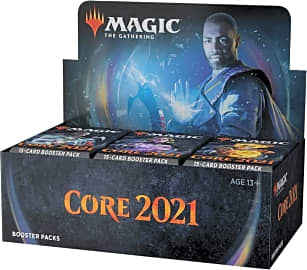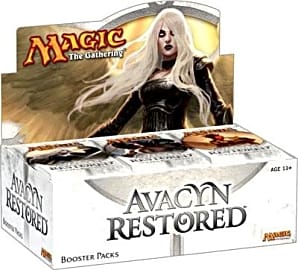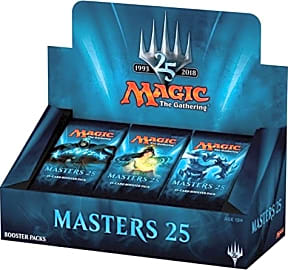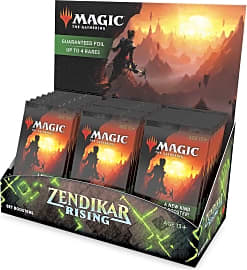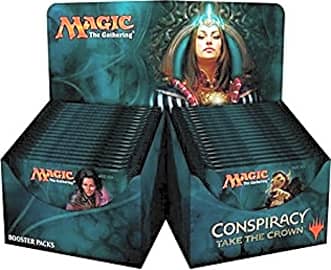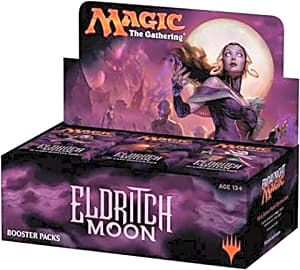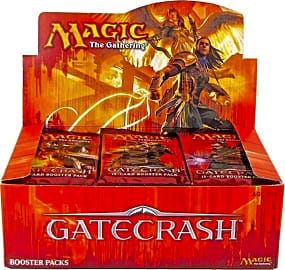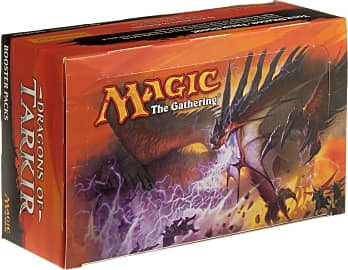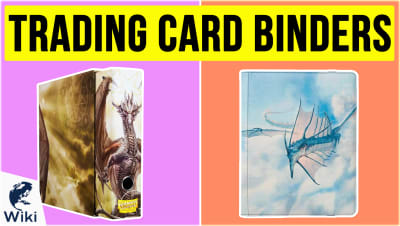The 10 Best Magic Booster Boxes

This wiki has been updated 46 times since it was first published in April of 2015. With more than a quarter of a century of history and millions of players to its credit, Magic: The Gathering is one of the most popular trading card games on the market. These booster boxes add to the excitement with deck-building assortments in various themes for gamers to expand their mythical horizons and take on new challenges based on their particular strategies and alignments. When users buy our independently chosen editorial recommendations, we may earn commissions to help fund the Wiki.
Editor's Notes
September 30, 2020:
While I thoroughly enjoy actually playing the game, I probably take as much pleasure, if not more, from the act of opening up boosties. It's like playing the lottery with both an immediate and long-term benefit. In the moment, you might recognize a particularly rare pull, and then down the line you might find that a card you tossed in an experimental deck at the last minute significantly changes that deck for the better.
This is what I love about Double Masters. It's exceedingly unusual for Wizards of the coast to offer this much access to foils, rares, and mythics. They've literally doubled the allotment for this box, with two of each major card type compared to the one almost every other set in history. Of course, there's a downside to the collectability here: if everyone's getting that many more rares, their value over time might not rise to the level of the priciest vintage cards out there.
That set is also on the pricey side, where something like Core Set 2021 offers anyone just getting into collecting and playing a way to catch up with a lot of the most recently developed mechanics. And if it's planeswalkers you're after, I hear tell that Masters 25 was absolutely lousy with them. They might not all be keepers, and collectability isn't really on offer, but in terms of adding some power to your deck, it's a smart buy.
April 03, 2019:
Among the recent additions to the available booster boxes on the market, three stood out and absolutely had to be included on our list. As it would happen, another three (Shadows Over Innistrad, Amonkhet, and Origins) were removed from the list as their cards had aged without gaining much value on the market, while new cards with similar abilities and lower casting cost rendered several of their best offerings sub-standard. The new sets include Masters 25, which is a commemorative release for the company's 25th anniversary; Ultimate Masters, which is said to be the last Masters release for the foreseeable future; and the 2019 Core Set. That last one was pretty exciting, as Wizards of the Coast had said the Core Sets were not coming back, but they went ahead with this very comprehensive release. It's probably one of the best boosters for deck builders new to the game who are still settling on a color or two.
Before Magic, Magic
Revivalists of the late 19th Century, such as Madame Blavatsky and Aleister Crowley, built enviable careers around insisting ancient secrets need not be secrets.
When talking about the history of Magic: The Gathering, most people think of Richard Garfield, the award-winning game designer who invented the game in the early 1990s. But anyone who's played the game, Garfield included, knows that magic itself has a much richer history than a mere deck of cards at a tournament table.
Before Gandalf, before Harry Potter, magic was the providence of what we now call scientists (a term originally coined in 1834 as an insult meaning "know-it-all"). Natural philosophers, many of which honestly believed that words and things shared common essences, dedicated their lives to studying Nature (with a capital N, of course) by studying the words and symbols that described it.
What those natural philosophers called natural magic included what we now call biology, zoology, mineralogy, botany, and even philology. What they called alchemy we now call chemistry. But the one thing these philosophers had in common that modern scientists do not was their penchant for enigmatic language, puzzling puns, and esoteric symbolism — not unlike that found on many Magic: The Gathering cards.
Despite the decline of their ideas at the hands of Modernity, natural magicians and alchemists' strange approaches to symbols carried on. Revivalists of the late 19th Century, such as Madame Blavatsky and Aleister Crowley, built enviable careers around insisting ancient secrets need not be secrets. By virtue of their vices, magic became magick (with a K) in an attempt to differentiate modern rituals from what many considered to be misguided practices.
Needless to say, all attempts to differentiate fell short. Blavatsky fashioned herself an untrustworthy medium and Crowley fashioned himself a so-called "beast" in the eyes of London's media.
Not only did Blavatsky and Crowley enjoy role-playing in their own little ways, but they also enjoyed playing games with cards, so much so that Crowley went so far as to design his own deck, which he called the Thoth tarot.
The Magic of Magic
Unlike the tarot, to which modern playing cards are quite closely related, Magic: The Gathering is not limited to a standard deck with specific suits and characters. Doubles, triples, and even quadruples are allowed and there is no upward limit to the number of cards you can have.
Planes determine types of terrain, types of terrain determine types of magic, and types of magic determine which sorceries you can cast and which creatures you can summon.
By combining the social aspect of baseball trading cards with the strategic aspects of complex card games such as Hearts, Richard Garfield, a PhD in combinatorial mathematics, devised the world's first collectible card game.
First published in 1993 by Wizards of the Coast, Magic was initially intended to keep people occupied during periods of downtime at gaming conventions. In just a few short months, however, the game acquired an enormous following, resulting in the development of expansion packs and numerous clones, including Wizards of the Coast's own attempt to compete with itself (kind of like how Tide, Gain, and Cheer are all made by Procter & Gamble).
Heavily inspired by Dungeons & Dragons, Magic is more than just a card game. It's also a role-playing game. Players, called mages or planeswalkers, specialize in up to five types of magic, though typically no more than three in an attempt to conserve mana. They traverse the various planes of the multiverse and engage each other in no-holds-barred combat.
Planes determine types of terrain, types of terrain determine types of magic, and types of magic determine which sorceries you can cast and which creatures you can summon.
One Plane, Two Planes, Red Planes, Blue Planes
The trick to choosing a booster pack depends a bit on which color of magic you want to focus on. Unlike the schools of magic in tabletop role-playing games such as Dungeons & Dragons, in which one might be inclined to roll a chaotic evil, glass-cannon necromancer with an abjuration allergy and extremely low charisma, the colors of magic in Magic are defined not by one's ability to summon three Wicked Akubas, but the extent to which the strengths of one color compensate for the weaknesses of another. You can, of course, play with a mono-black deck, in which case you would want to opt for a mono-black booster box if you can find one, or a least a box known for strong black cards.
However, because most planeswalkers prefer to walk most planes by building multiple decks with various color combinations, investing in a mono-color booster box is typically reserved for players hoping to enhance a single deck within a collection of decks. Players looking to boost their entire collection of decks simultaneously will want to invest in one of the many, and most popular, multi-color booster boxes.
Alternatively, you could always revive an old tradition from the 1990s and gamble away your best cards. Despite being banned at officially sponsored tournaments, playing for keeps tends to be far more exciting and nerve-wracking than opening thirty-six packs in your living room.


